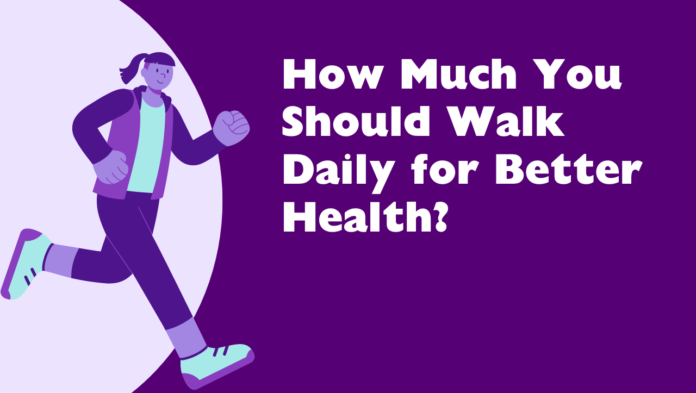
Walking is one of the simplest and most accessible forms of exercise that can significantly contribute to your overall health and well-being. Whether you’re aiming to improve cardiovascular fitness, maintain a healthy weight, or boost your mood, establishing a daily walking routine can be immensely beneficial. But how much should you walk each day to reap these health benefits optimally? Let’s delve into the details.
Benefits of Walking
Before determining the ideal daily walking distance, it’s essential to understand the numerous benefits walking can offer:
- Cardiovascular Health: Regular walking helps strengthen the heart, improve circulation, and reduce the risk of heart disease and stroke.
- Weight Management: Walking burns calories, making it an effective complement to weight management efforts when combined with a balanced diet.
- Mental Well-being: Walking stimulates the release of endorphins, reducing stress and anxiety while improving mood and overall mental health.
- Joint Health: Low-impact walking can help strengthen muscles around joints, reducing stiffness and pain.
- Longevity: Studies suggest that regular walking is associated with a longer lifespan and improved quality of life in older adults.
Recommended Daily Walking Goals
The amount of walking recommended for health benefits can vary based on individual fitness levels, age, and overall health. Here are general guidelines to consider:
- Basic Recommendation: Aim for at least 150 minutes of moderate-intensity aerobic activity, such as brisk walking, per week. This translates to about 30 minutes a day, five days a week.
- Step Count: Aiming for 7,000 to 10,000 steps per day is often suggested for maintaining overall health. This can be tracked using a pedometer or a smartphone app.
- Intensity: The intensity of your walk matters. A brisk pace where you can talk but not sing comfortably is ideal. This typically ranges from 3 to 4 miles per hour.
- Progression: Gradually increase your walking time and intensity as your fitness improves. This can include adding more days per week or increasing the duration of each walk session.
Tailoring Your Walking Routine
While the above recommendations provide a good starting point, it’s important to tailor your walking routine to fit your individual needs and goals:
- For Weight Loss: If weight loss is your goal, aim for 60 minutes or more of moderate-intensity walking most days of the week.
- For Fitness Improvement: Consider incorporating intervals of faster-paced walking or including uphill walks to challenge your cardiovascular system and muscles.
- For Health Maintenance: Consistency is key. Even shorter walks throughout the day can add up to significant health benefits over time.
Tips for Successful Walking
To make the most of your daily walks and ensure you stick to your routine:
- Set Realistic Goals: Start with manageable walking goals and gradually increase them over time.
- Make It Enjoyable: Choose scenic routes, listen to music or podcasts, or walk with a friend or pet to make your walks enjoyable.
- Stay Safe: Wear comfortable shoes, dress appropriately for the weather, and stay hydrated, especially during longer walks.
Conclusion
Walking is a simple yet powerful way to improve your health and well-being. By aiming for at least 30 minutes of brisk walking most days of the week, you can significantly enhance cardiovascular health, manage weight, boost mood, and improve overall quality of life. Customize your walking routine based on your fitness goals and enjoy the many benefits of this accessible form of exercise. Remember, every step counts towards a healthier you!

























